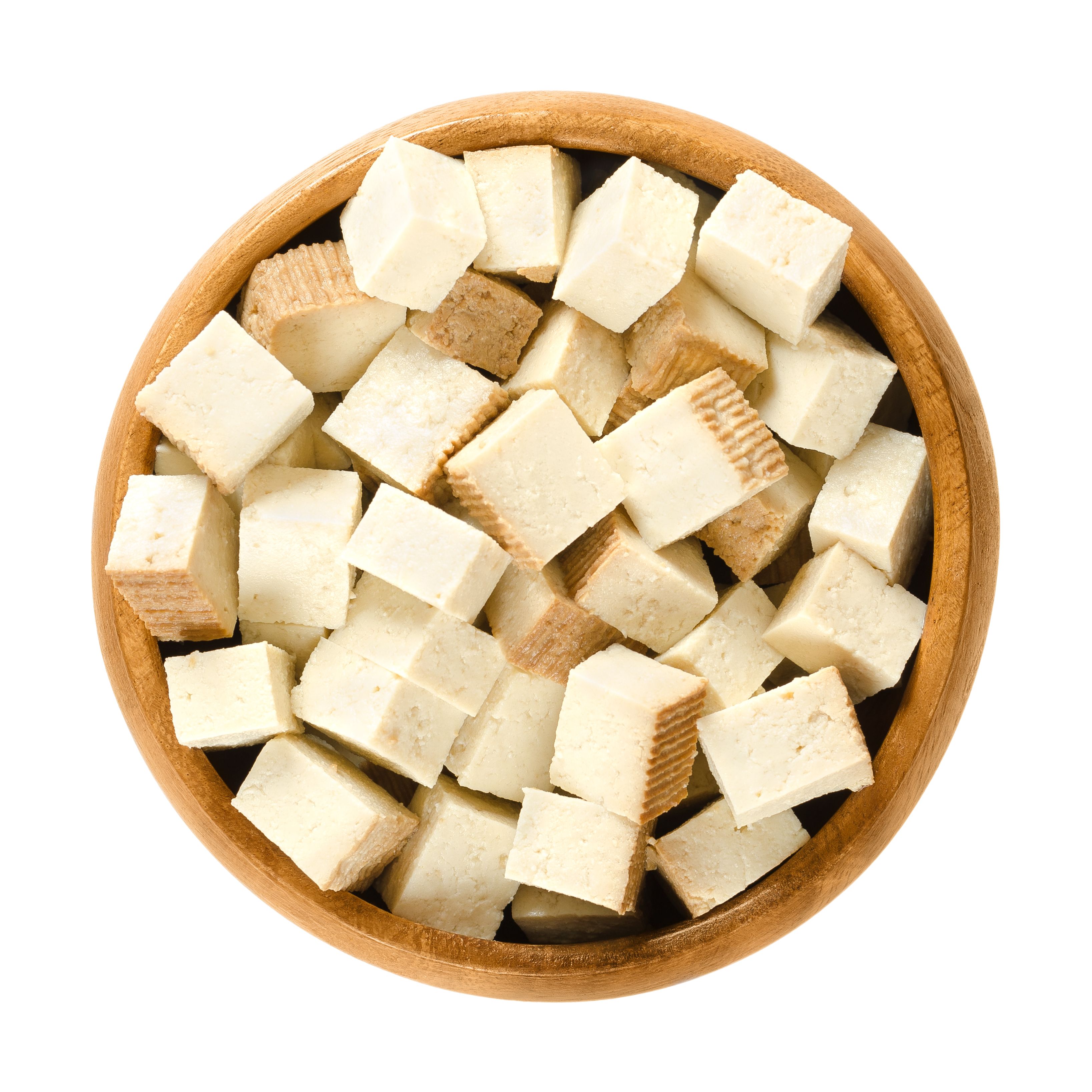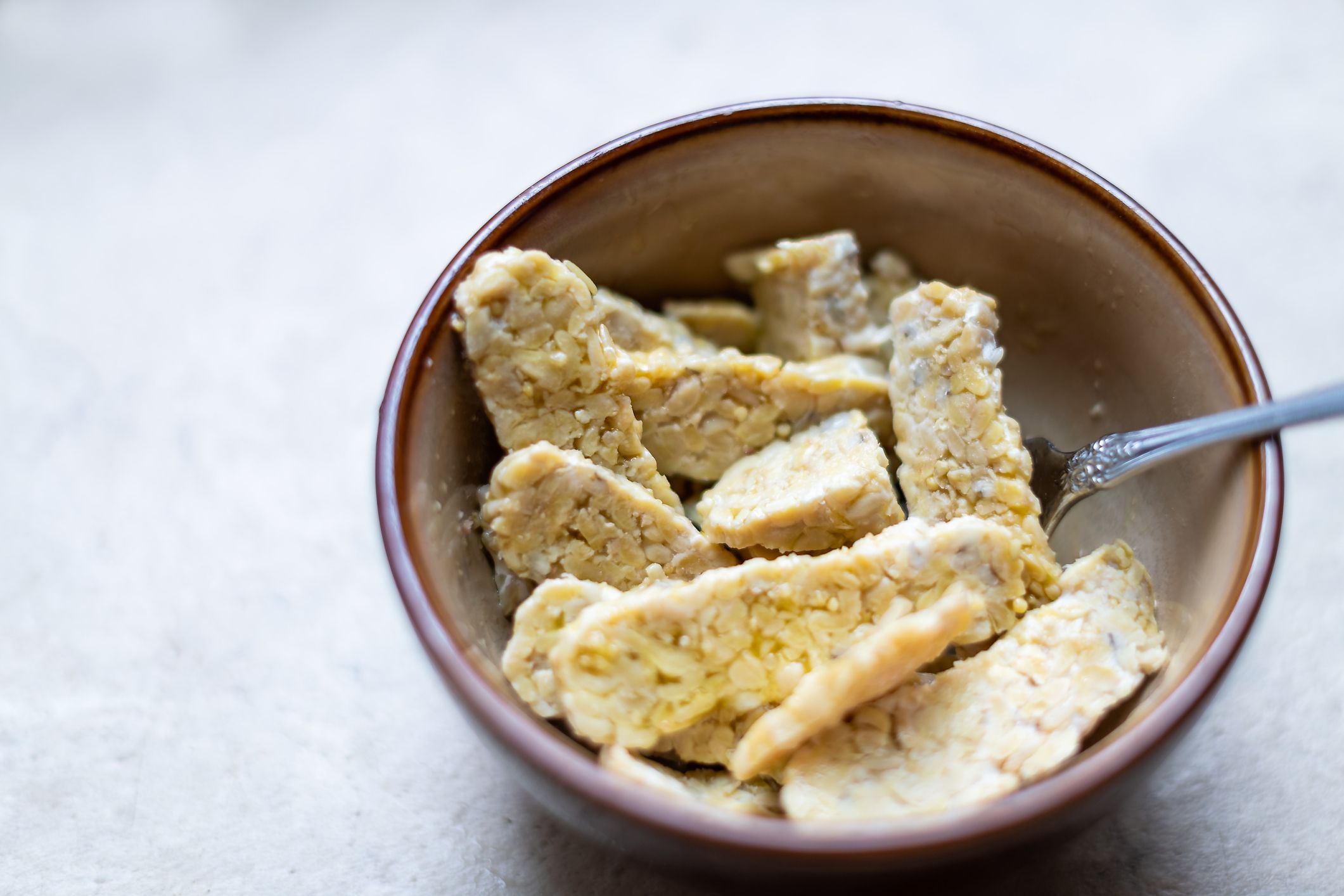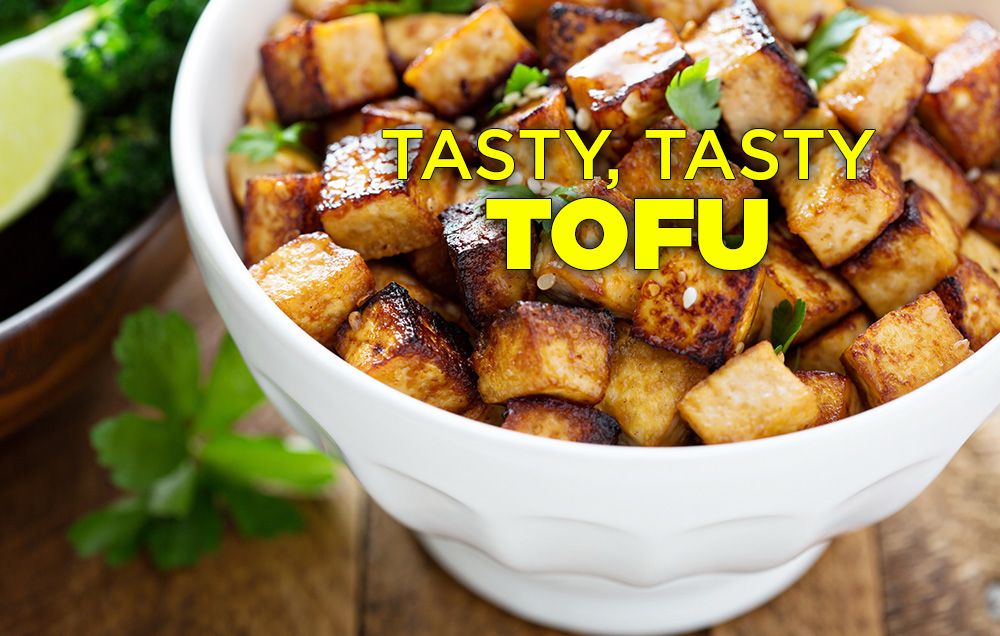There are enough vegan- and vegetarian-friendly meat substitutes in the grocery store these days to make your head spin. While brands like Impossible Meat and Beyond Burger have been making headlines, classic plant-based protein powerhouses like tofu and tempeh are still a fave among non-meat eaters. But the real question is…are they healthy? And which food would win in a tofu vs. tempeh faceoff?
What exactly is tofu?
Tofu is a popular soy-based meat alternative. The white blocks range from silky and soft to firm. And making tofu is a lot like making cheese: “Tofu is processed by curdling unfermented soy milk to coagulate the proteins then pressing it into a block,” says Sonya Angelone, RDN. “Tofu is considered a whole food that is minimally processed, unlike many soy products that are genetically engineered.”
Tofu is one of a few plant-based foods that provides a complete source of protein. “It supplies all the amino acids your body needs to create muscle, hormones, and antibodies,” Karen Ansel, RDN, co-author of Healthy in a Hurry: Easy, Good-For-You Recipes for Every Meal of the Day, previously told Women’s Health. “Plus, it’s naturally low in saturated fat and contains zero cholesterol.”

For tofu, the processing actually bumps up the nutrition content. “Soy can be processed either with a magnesium chloride or a calcium sulfate, which contribute either magnesium or calcium,” says Angelone. “It can have 775 mg of calcium and 66 mg of magnesium depending on how it is processed.”
Here’s the nutritional breakdown of one serving (100 g)of tofu, per the USDA:
- Calories: 94
- Fat: 5 g (.5 g sat)
- Protein: 9 g
- Carbohydrates: 2 g
- Fiber: 2 g
- Sugar: 0 g
- Sodium: 12 mg
- Calcium: 176 mg
- Iron: 2 mg
- Magnesium:mg
- Potassium: 147 mg
Gotcha, so what is tempeh?
Tempeh is another veggie- and vegan-friendly protein, but there’s an added step that distinguishes it from tofu. To make tempeh, soybeans are cooked, fermented, and then packed into a brick-like cake. Additional whole-grain ingredients, like brown rice, quinoa, millet, flax seeds, and sesame seeds, can also make their way into the tempeh mix. “Tempeh contains isoflavanoids like daidzen, genistein, phenolic acids, phytosterols, which can lower cholesterol,” says Angelone.

The fermentation makes tempeh easy on the stomach, according to Angelone. “It can be processed using microorganisms—a fungus—which ferment the soy,” says Angelone. “The length of fermentation time directly affects the health perks, and it can have more antioxidant benefits the longer it is fermented.”The fermented soy balances the healthy bacteria in your gut, which can strengthen your immune system, keep you regular, and protect blood vessels from inflammation.
Tempeh is another complete source of protein. It also contains about 10 percent of your daily calcium and iron needs. If the soy is processed with magnesium chloride, the tempeh can have a significant amount of magnesium as well.
Here’s the nutritional breakdown of one serving (100 g) of cooked tempeh, per the USDA:
- Calories: 195
- Fat: 11 g (3 g sat)
- Protein: 20 g
- Carbohydrates: 8 g
- Fiber: 0 g
- Sodium: 14 mg
- Calcium: 96 mg
- Iron: 2 mg
- Magnesium: 77 mg
- Potassium: 401 mg
Tofu vs. tempeh: Which is healthier?
Tofu and tempeh come from the very same source: soybeans. They are very similar, but the fermentation process helps tempeh take the lead on nutritional benefits. “Tempeh has more protein, dietary fiber, and vitamins compared to tofu,” says Angelone. “It is less processed, as well, so tempeh is considered healthier.” That’s why tempeh makes it into Angelone’s top three plant-based proteins along with legumes and quinoa.
But I’ve heard soy is bad for you, so what’s the deal?
If you talk to RDs, they all say there’s no evidence that eating soy (a low-cal, high-protein food) as part of a balanced diet will have any negative effects on your health. (Consider those soy myths officially debunked.) In fact, the American Cancer Society says that consuming moderate amounts of soy foods is safe for everyone.
There are so many vegan celebs…check out all these proud, plant-based stars:
Great, now how can I use them?
Tofu and tempeh are both fairly blank slates, but don’t mistake that for boring or bland. Tofu is great at soaking up all the flavors of marinades and sauces. And, as long as that tasty sauce doesn’t pile on the sugar and salt, your plant-based protein dish remains healthy. “They are both easy to cook with and very versatile,” says Angelone. “They absorb the flavors they are cooked with so can be used in most any type of cuisine.”
Pro tip: Before starting any delish recipe with tofu, press out the excess water
Not all forms of tofu and tempeh get a big nutritionist stamp of approval, though. Angelone suggests steering clear of fried tofu dishes or sodium-packed and processed variations, “think: tofu jerky, tofu-less chicken, or tofu dogs.”
Bottom line: Both tofu and tempeh are packed with nutrients and a good source of protein, but fermented tempeh is the preferred plant-based protein.
Source: Read Full Article
